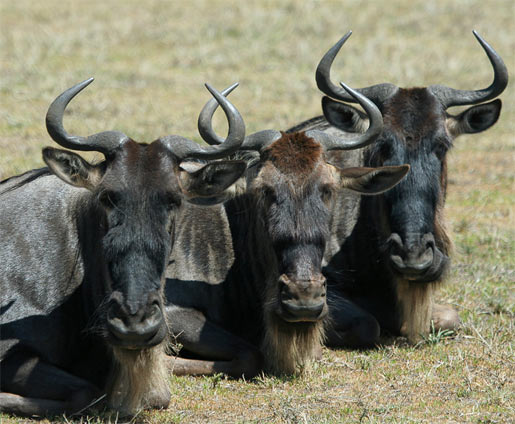Wildebeest – Poor Beast, the Survivor of the Serengeti
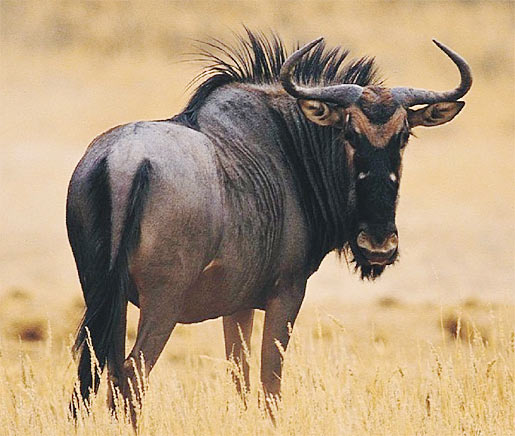
Growing to anywhere from 5.5 to 8 ft (1.7 to 2.4 m) tall, and weighing between 370 and 604 lbs (168 to 274 kg), the Blue Wildebeest is a large Bovid that lives on the open plains and dry woodlands of Southern and Eastern Africa (their largest population, numbering over one million, resides in the Serengeti region). With it’s black face, tufty beard, rocking-horse gait, and endless stream of snorts and grunts, the wildebeest has gained a reputation for being “cartoonish” at first glance. We might want to call them the “poor beast” because whenever you watch a nature program and some poor animal is getting eaten by a crocodile, hyena or lion guess who it is. However, these large, antelope-like creatures are an extremely successful species when it comes to survival. They’re so successful in fact, that it’s not uncommon for a wildebeest to live to be twenty years old!
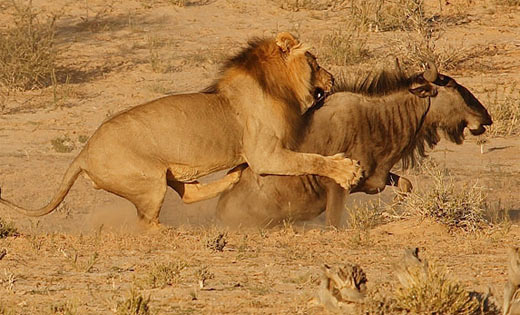
Wildebeests are known to travel in large herds of sometimes up to tens of thousands, and make migrations of over 1,000 miles (1,600 km) in search of water and grazing land during dry seasons. Within these large herds, an amazing method of ensuring survival can be witnessed. The bulls (full grown males) will patrol the outside of the herd, keeping a tight perimeter and defending the zone around it from outside predators like lions, cheetahs, hunting dogs, and hyenas; even while traveling. They are also known to keep in close proximity to zebras and ostriches in hopes that their wariness will provide earlier warning of predatory attacks. When attacks do occur, the bulls use their large horns, muscular frames, and “ramming speed” of up to 50 mph (80 kph) to ward off enemies. Somehow they don’t seem so clever when it comes to crossing crocodile-infested rivers. Maybe there is not much choice.
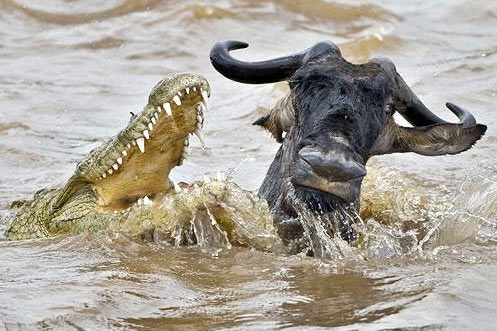
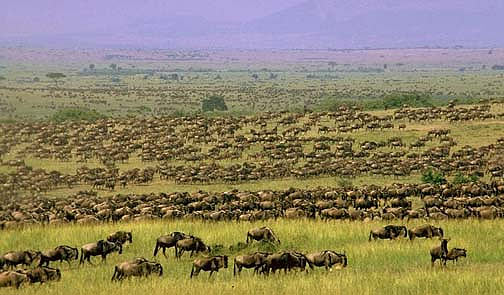
Wildebeests are also known for being extremely territorial with each other, with bulls using scent markers, fecal markers, and often times physical aggression to hold territories for as long as an entire year. Despite this in-fighting, the wildebeest remains one of Africa’s great survivors, and so long as they roam the plains in groups amounting to small armies, they will continue to live long lives.
